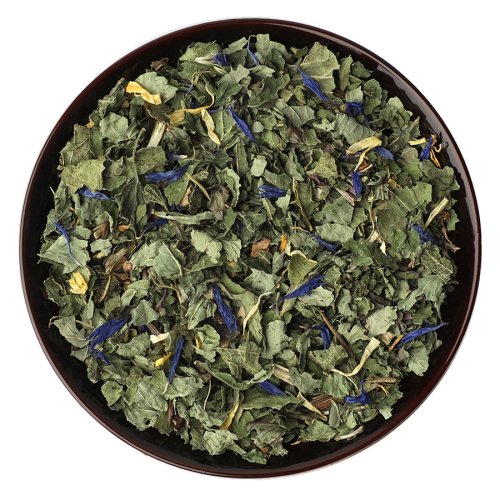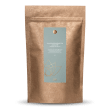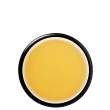Lemon balm
Melissa officinalis is a southern European plant. Like many herbs from the south, it was first cultivated in monastery gardens and then gradually spread throughout Europe. The perennial plant sprouts in March and can grow up to 70cm tall by July and is clearly recognisable by its scent. Due to its many uses, however, it was cultivated early on throughout Europe as a popular aromatic herb. In the Middle Ages, it was cultivated in every monastery garden because it was considered particularly valuable.
Honeybush
Sweet honeybush, like rooibos, is a type of fynbos native to the cape region of South Africa. To produce honeybush tea, the bushy branches are cut close to the ground and hand-picked. After harvesting, the fresh branches are quickly brought in for processing to prevent oxidation and fermentation. The branches are gently fan dried at temperatures ranging from 99-115°C depending on the day temperature.
Sage
Sage (Salvia officinalis) belongs to the labiates family. It is found all over the world, except in Antarctica and Australia, and is one of the most diverse genera of angiospermous plants. Valued as a medicinal plant since ancient times, sage is an indispensable component of modern cuisine and medicinal herbs.
Camomile
Camomile (Matricaria chamomilla L.) is one of the best-known European herbs and has been an integral part of European herbalism for centuries. Camomile has conquered the entire planet alongside humankind, reaching as far as to the African continent. Camomile flowers contain a valuable combination of diverse botanicals, which are used in manifold ways.
Hyssop
Hyssop (Hyssopus officinalis) is a perennial plant of the Lamiaceae family. Its bright blue-violet flowers bloom between June and September, and are particularly attractive to bees. The plant belongs to the genus Hyssopus officinalis, whose five subspecies are native to southern and eastern Europe, western Asia and northern Africa. Hyssop has been used as a spice and medicinal plant in Europe since the early Middle Ages. Hildegard von Bingen mentions hyssop as a remedy for various ailments, including breathing and stomach issues.
Passionflower Herb
The passion flower (Passiflora incarnata), native to Central and South America made its way from the Suptropics to the colder parts of Europe, arriving here as an ornamental plant. Its five stigmas are venerated in the Christian faith as the five wounds of Christ. While the indigenous tribes of the Americas mainly used the roots, the Europeans discovered the herb's calming effects.
Wild Pansy
The wild pansy (Viola tricolor) can be found in many places from flowerbeds to roadsides. Widespread in most parts of Europe, it is only absent in the northern- and southernmost parts of this continent. It is an annual and grows to a height of about twenty centimetres. It prefers meadows, roadsides and fallow land, and flowers from May to September. Since ancient times, this little sister of the violet has been enshrined in plant lore and many legends have grown up around it.
Valerian
Valerian (Valeriana officinale) can be found in almost all of Europe. It grows on the banks of streams and ditches, marshes and at the edges of forests. It is a perennial that reemerges in the spring. With its rich plant substances, it has been used in many ways since ancient times. This is also reflected in its name: "valere" in Latins means "to be healthy".
Goldenrod
Goldenrod (Solidaginis virgaureae) is a crop that has been recognised for its various uses for centuries. The introduction of goldenrod to Europe took place in the 17th century, and since then has thrived as an invasive neophyte in the sparse forests and dry woodland meadows of Europe and North America. This medicinal plant, which marks the end of summer with its vibrant yellow flowers, can also be used as a natural dye.
Peppermint
Peppermint has been used for ages in cultures around the world for purification rituals, as incense, and in the form of calming tea. To help improve concentration, students in ancient times wore a crown of twisted mint and relied on the sweet, clear scent for its stimulating effects. Traditionally, peppermint is drunk as a tea or inhaled in the form of steam baths.
Nettle
Nettle (Urtica dioica, Urtica urens) deserves a place of honour among herbs. The 70 species grow everywhere on the planet except in the Antarctic. Perennial, undemanding and effective, it likes to thrive in the vicinity of humans and many butterflies are dependent on it. In antiquity it was used to ward off evil spells, and in Germany it was called Donnernessel: "thunder nettle" in dedication to Donar, the god of thunderstorms.
Cornflower
The cornflower (Centaurea cyanus, Cyanus arvensis) is an annual flowering plant that often grew as a weed in cornfields in the past, hence its name. Due to intensive farming, these days it is an endangered species in its native Europen homeland, but can still be found growing in the wild at altitudes of up to 1800m in the Alps. Because of its high content of bitter substances and anthocyanins, it has a firm place in herbalism.
Marigold Petal
The marigold (Calendula officinalis) belongs to the daisy (Asteraceae) family, and is widespread in Europe. With its yellow and orange flowers, it is particularly striking and can be found in many gardens. The petals, when dried, can be used as a tea or in the form of an extract for external use.












